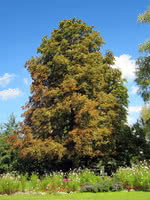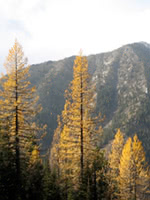Mon-Fri 9am - 5pm Mountain time
Horse Chestnut vs Western Larch
Aesculus hippocastanum
Larix occidentalis
CUSTOM GROW
Horse Chestnut is a medium sized deciduous tree that is native to Greece but has been grown in North America for hundreds of years. It produces large nuts.
A top CO2 absorbing species. Experts think this tree may help climate change more than others.
Western Larch is a pioneer species that can survive in nutrient poor soil and is found in the valleys and on the lower slopes of mountains in mixed forests. In the warm months, this larch is covered in clusters of soft green needles that turn golden yellow before dropping in the fall. Its dense, sturdy wood is excellent for lumber, making this Larch valuable in Western North America.
Horse Chestnut Quick Facts
Western Larch Quick Facts
Toxicity: most parts of plant are toxic

